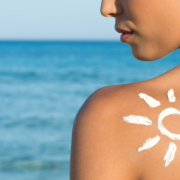Aloe for insect bites and sunburn
As a distinctive feature, Aloe or desert lily which grows spontaneously in South Africa, South America and the Mediterranean regions, has an extraordinary ability to retain water, even in a hot and arid climate, which allows it to survive in extremely difficult conditions.
Ancient documents testify how the anti-inflammatory, soothing, analgesic, purifying and immunostimulant properties were already known and exploited by Assyrians, Egyptians, Jews, Greeks, Romans, Indians, Chinese, Maya. The Israelites wandering in the desert following Moses used Aloe as a sunscreen and for its hydrating and healing properties. Cleopatra used an Aloe ointment for its moisturising, emollient, protective properties, capable of maintaining or restoring skin elasticity, giving it a youthful appearance. It is curious how Christopher Columbus, on his way to the New World, writes in his diary: ’Todo està bien, hay Aloe on board.’
Thanks to the richness of its active ingredients, numerous properties and the variety of therapeutic uses, Aloe has been defined “an entire pharmacy in a single plant”.
Insect bites and sunburns
Insect bites (bees, wasps, hornets, flies, fleas, spiders) can induce a localised painful inflammatory swelling. In some particularly sensitive subjects, general reactions, even serious ones, can occur.
Intense and occasional sun exposure with erythema and sunburn, causes multiple types of damage to the skin with a decrease in the protective hydrolipidic film, progressive dehydration, degradation of collagen, loss of elasticity, the appearance of wrinkles and pigmented spots. It also involves an increased risk for the onset of melanoma.
Preparations based on Aloe juice, obtained by cutting the leaf, are rapidly absorbed, ensure a rapid soothing action, restore skin hydration, protect against the sun’s ultraviolet rays, promote the renewal of skin collagen. Aloe is suitable for all skins and, in particular, for the most fragile, sensitive ones, with a tendency to dehydration.

 Specchiasol
Specchiasol Specchiasol
Specchiasol Specchiasol
Specchiasol Specchiasol
Specchiasol



 Specchiasol
Specchiasol Specchiasol
Specchiasol